MARY QUEEN OF SCOTS 1542-1587
There has always been a fascination about Mary Stuart, Queen of Scots. Her life has been romanticized in novels and in the movies. However, the story of Mary is a great tragedy in history. Mary was a very high-spirited, impulsive, highly-sexed woman and a devout Catholic in the bargain. There were bound to be problems when she returned to Scotland during a period of austerity in religion. |
CHILDHOOD |
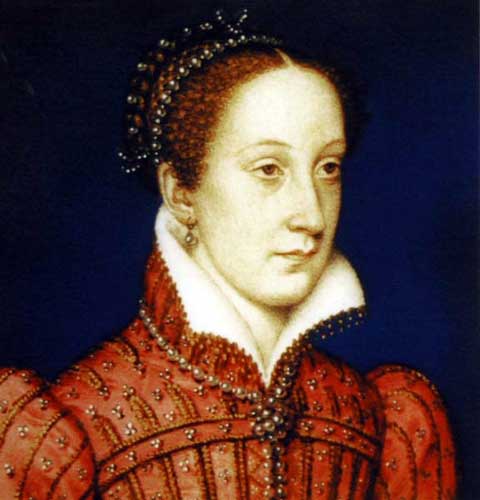 |
Mary was a baby when she was crowned at Stirling Castle, the only legitimate child of James V who died immediately after her birth. Not only was she Queen of Scotland, but as the granddaughter of Margaret Tudor, she was in line for the throne of England after the children of Henry VIII. Mary was supposed to marry Henry VIII's son, Edward. How history would have been changed if that had happened. By proposing marriage with his son, his interference in Scottish politics could be taken as a benevolent interest. However, there were Catholics who were opposed to such a marriage and Henry overplayed his hand and made demands to which Mary of Guise, Mary's mother, who was acting as regent, could not acquiesce so they took the little Queen to Stirling Castle. Henry then began his "rough wooing" of Mary by invading Scotland. He sent an army north and they burned Edinburgh and the abbeys in the Borders. These terrible brutal attacks gave Mary of Guise and Cardinal Beaton |
an opportunity to gain control. The effect of his actions was to alienate the hearts of many Scotsmen. "Scotland might have come to England as a bride, but as a bondswoman she would never come." |
RETURN TO SCOTLAND |
| When she returned to Scotland Elizabeth declined to give her a safe conduct across the North Sea because Mary had refused to ratify the Treaty of Leith. She felt that it was worded in such a manner that she must abandon the claim to England forever. Was she to lay claim to the English throne or was she to abandon her immediate claim and gain recognition as the accepted successor of Elizabeth, if Elizabeth should die without heirs? She decided to play a middle road for the time being. When she returned to Scotland, she refused to accept the invitation of the Earl of Huntly to land in the northeast and make herself a Catholic Queen with the aid of the Clan Gordon. In fact, she forbade |
 |
| her entourage and lieges to do anything against the form of religion which was "public and standing" upon her arrival. This was the first religious toleration in Great Britain. She was given a grand welcome by the people when she landed in Leith port by Edinburgh. The people were charmed by her courtesy, beauty and winning mannerisms. However, by now, Scotland had been reformed by Knox into a Protestant nation and soon the people began to fear the very Catholic Mary, her friends and the Catholicism she brought from France with her. Mary soon ran afoul of Knox and his reformation. |
LORD DARNLEY |
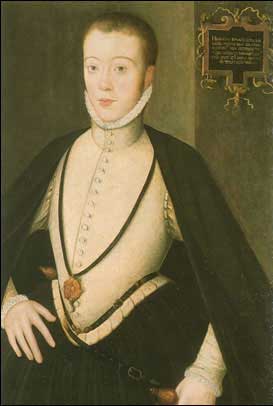 |
An unmarried queen was a great asset for any country. There was talk of Mary marrying the Archduke Charles, Charles IX of France, the Duke of Guise or Don Carlos, the son of Philip II and even of a Protestant suitor, Leicaster or Eric of Sweden. Mary tried to arrange a match which would have the approval of Elizabeth since Mary was trying to remain in good graces with Elizabeth so she would name Mary as her heir. It soon became apparent that Elizabeth would oppose most any match. Therefore, Mary herself chose her cousin Henry Stuart, Lord Darnley, son of the fourth Earl of Lennox. Darnley was also a contender for the English throne and a Catholic. Mary was very much taken by his fine figure and they fell in love and were married without waiting for a dispensation from Rome (they were first cousins) or for Elizabeth's approval. Mary possibly was a virgin when she met Darnley, even though she had been married to the King of France. Undoubtedly, there was a strong sexual attraction to him. Darnley was a very ambitious young man, not too bright, and wanted to rule the country not as the consort of the Queen but as the King in his own right. He proved to be arrogant, ill behaved, faithless and untrustworthy. Mary by now was pregnant with the child who would eventually become James VI of Scotland. Because Darnley had proved such a disappointment to her, she turned her attentions and affection to an Italian singer, David Riccio, whom she made her secretary. |
DAVID RICCIO |
| Mary and Riccio shared a close friendship, which angered Darnley, being a jealous person. I don't think that Mary and Riccio ever had an intimate relationship but were close as only good friends can be. It has been advanced that Riccio was a spy of the Pope. Not too much is known about him other than he was a musician and before long was supplanting Darnley in counsel and in companionship. One night, Darnley, in a drunken rage, invaded Mary's apartments where she was having a supper party. Darnley and his men dragged poor Riccio out into the hallway and stabbed him to death before the shocked and horrified Queen's eyes. Not long after this, Mary and Darnley reconciled. I personally believe that this was merely artifice on Mary's part to make Darnley assured of his position in her life until she could find a way to rid herself of him. Shortly after the birth of Mary's son, Darnley was killed in an explosion at his home. He had escaped the explosion that destroyed the house he was living in but was found with his page dead a short distance from the house. It was rumored, and is probably true, that he was killed by James Hepburn, the Earl of Bothwell. It was found that Darnley had died by strangulation. |
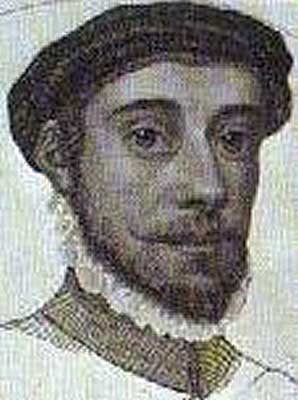 |
THE EARL OF BOTHWELL |
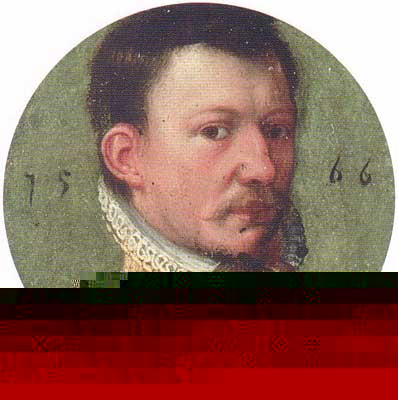 |
Mary married the Earl three months later. This was one of Mary's biggest mistakes. It proved to be a political tragedy for her. Bothwell seems to have had a strong influence on Mary. She always seemed in need of a strong man for counsel. As a child she could trust and relied upon her French relatives for advice. Bothwell persuaded her that if she returned to Edinburgh from Stirling where she had had her baby, her life would be in danger. She went with him to Dunbar Castle where Bothwell could protect her. There are some who believe that Mary was forced to marry Bothwell because of their conspiracy to murder Darnley. However, it is more likely that she was attracted to Bothwell and his strength which was in such opposition to Darnley's weaknesses. Mary may have felt that getting rid of Darnley would be approved by Parliament since she could not divorce him lest her son be jeopardized. |
| Bothwell was brought to trial for the murder of Darnley but he was acquitted and obtained a recommendation by some of the nobles that he should marry Mary. Bothwell had been married only a short time to another woman whom he divorced in order to marry Mary. They were married at Holyroodhouse in a Protestant ceremony after he had been created the Duke of Orkney. |
MARY'S CAPTURE |
| Scotland was shocked, more by the fact of the marriage than by the murder of Darnley. A great deal of deceit revolved around Mary and she had many enemies. Many of the nobles opposed her marriage to Bothwell and they rose against her and Bothwell. A Protestant army of 3000 men led by the Earl of Morton, met them at Carberry Hill and after six hours of fighting, Mary persuaded Bothwell to leave the field. She surrendered herself and was taken to Lochleven Castle. She soon realized the seriousness of her predicament as she was forced to ride among the rebels without food or rest and with no attendants. When she arrived in Edinburgh she was met with jeers from the crowd and cries of burn the whore. |
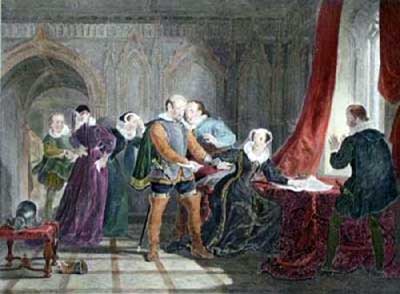 |
Death by burning was the fate of a woman who murdered her husband. She was confined in a small room in the Provost's house. The mob outside continued to call for her death. |
ESCAPE |
 |
The Earl of Moray, a strong Protestant, and Mary's once beloved and later discredited half-brother, was made Regent for James VI. When Mary escaped from Loch Leven Castle the Earl gathered an army together to go after her. Many nobles swore their allegiance to Mary and met with Moray in battle just outside of Glasgow. The battle lasted less than an hour and was won decisively by Moray. Mary now feared that she would fall into the hands of her enemy and against the advice of the nobles who had supported her she escaped to England and to what she thought would be the protection of one queen for another. Mary was accused many times of plotting against Elizabeth. Elizabeth professed impartiality, requesting |
| evidence of Mary's treason and then upon being given the Casket Letters, which may have been forged to begin with, refused to rule for either side. In truth, she was afraid of Mary whose position as legitimate Roman Catholic Queen of England became more dangerous to Elizabeth, especially after her own excommunication. In 1572 she secretly proposed to send Mary back to Scotland to be murdered but this plan did not come to fruition. Though Elizabeth had been named Godmother to Mary's son, they never met face to face. Even today, they are both buried at Westminster Abbey separated so that they can not see each other. Elizabeth had her put under house arrest for the remaining 19 years of her life. Elizabeth felt it would be better to keep her a prisoner than to let her return to Scotland where more plots could be hatched and where her presence could provoke a civil war. During her captivity, Mary encouraged many plots to free her and to put her on the English and Scottish thrones. For her involvement in these plots, and the fear Elizabeth had of one of them succeeding, Elizabeth signed the warrant for Mary's execution and she was beheaded at Fotheringhay Castle in 1587. |
Mary's final letter to Elizabeth expressed her final requests, which would never be granted |
| "Now having been informed, on your part, of the sentence passed in the last session of your Parliament, and admonished by Lord Beale to prepare myself for the end of my long and weary pilgrimage, I prayed them to return my thanks to you for such agreeable intelligence, and to ask you to grant some things for the relief of my conscience. I will not accuse any person but sincerely pardon every one, as I desire others, and above, all God, to pardon me. And since I know that your heart, more than that of any other, ought to be touched by the honour or dishonour of your own blood, and of a Queen the daughter of a king, I require you, Madam, for the same of Jesus, that after my enemies have satisfied their black thirst for my innocent blood, you will permit my poor disconsolate servants to remove my corpse, that it may be buried in holy ground, with my ancestors in France, especially the late Queen my mother, since in Scotland the remains of the Kings my predecessors have been outraged, and the churches torn down and profaned. As I shall suffer in this country, I shall not be allowed a place near your ancestors, whoa re also mine, and persons of my religion think much of being interred in consecrated earth. I trust you will not refuse this last request I have preferred to you, and allow, at least, free sepulture to this body when the soul shall be separated from it, which never could obtain, while united, liberty to dwell in peace. Dreading the secret tyranny of some of those to whom you have abandoned me, I entreat you to prevent me from being dispatched secretly, without your |
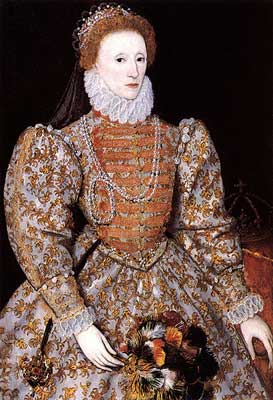 |
| knowledge, not from fear of the pain, which I am ready to suffer, but on account of the reports they would circulate after my death. It is therefore that I desire my servants to remain witnesses and attestators of my end my faith in my Saviour, and obedience to His church. This I require of you in the name of Jesus Christ in respect to our consanguinity, for the sake of King Henry VII, your great-grandfather and mine, for the dignity we have both held, and for the sex to which we both belong. I beseech the God of mercy and justice to enlighten you with his holy Spirit, and to give e the grace to die in perfect charity, as I endeavour to do, pardoning my death to all those who have either caused or cooperated in it; and this will be my prayer to the end. Accuse me not of presumption if, leaving this world and preparing myself for a better, I remind you will one day to give account of your charge in like manner as those who preceded you in it, and that my blood and the misery of my country will be remembered, wherefore from the earliest dawn of your comprehension we ought to dispose our minds to make things temporal yield to those of eternity. Your sister and cousin wrongfully a prisoner, Marie R." |
Her last letter to Henri III shows her state of mind knowing that she was to be executed "Monsieur mon beau - frere, estant par la permission de Dieu (she wrote in French as that was preferred by her). |
| Royal brother, having by God's will for my sins I think, thrown myself into the power of the Queen my cousin, at whose hands I have suffered much for almost twenty years. I have finally been condemned to death by her and her Estates. I have asked for my papers, which they have taken away, in order that I might make my will, but I have been unable to recover anything of use to me, or even get leave either to make my will freely or to have my body conveyed after my death, as I would wish, to your kingdom where I had honour to be queen, your sister and old ally. Tonight, after dinner, I have been advised of my sentence: I am to be executed like a criminal at eight in the morning. I have not had time to give you a full account of everything that has happened, but if you will listen to my doctor and my other unfortunate servants, you will learn the truth, and how, thanks be to God, I scorn death and vow that I meet it innocent of any crime, even if I were their subject. The Catholic faith and the assertion of my God-given right to the English throne are the two issues on which I am condemned. The bearer of this letter and his companions, most of them your subjects, will testify to my conduct at my last hour. It remains for me to beg your most Christian Majesty, my brother-in-law and old ally, who have always protested your love for me, to give proof now of your goodness on all these points; firstly by charity, in paying my unfortunate servants the wages due to them - this is a burden on my conscience that only you can relieve; further, by having prayers offered to God for a queen who has borne the title Most Christian Queen of France, and who dies a Catholic, stripped of all her possessions. |
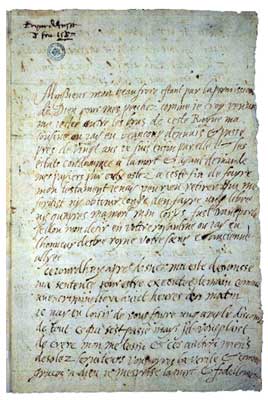 |
I have taken the liberty of sending you two precious stones, talismans against illness, trusting you will enjoy good health and a long and happy life. Accept them from your loving sister-in-law, who, as she dies, bears witness of her warm feelings for you. Give instructions if it please you, that for my soul's sake part of what you owe me should be paid, and that for the sake of Jesus Christ, to whom I shall pray for you tomorrow as I die, I be left enough to found a memorial mass and give the customary alms. Wednesday at two in the morning, Your most moving and most true sister, Marie R. Queen of Scotland." |
DEATH |
 |
It was a cold and bitter winter's day when Mary, with dignity intact as always, was led to the block. She wore her customary black cloak with a white veil over her head. When she reached the block, she dropped her cloak and revealed a crimson dress. Her last words were, -Into thy hands, O, Lord, I commend my spirit.- it took three strokes of the axe to sever Mary's head. True or not, the story is that when her head toppled, her body began to move, frightening everyone present. It was found that her little dog had been hidden in her dress. All that Mary took with her to her execution, crucifix, writing book, then her bloodstained clothes and |
even the block were burned.
There were to be no relics. When the executioner held up Mary's severed head the wig that she wore fell off and she was an old woman, white of hair and partially bald. Her wishes were not granted. Instead of being buried in France as she wished she was buried in England. Her death passed without incident from the Scottish people who were too busy with other troubles to give more than a passing thought to the Queen who had caused so much controversy in their country. |
 |
© Paisley Tartan Army 2008-09
